Showing 41-58 of 58 results
 western.sare.org news wireworms-in-western-washington
western.sare.org news wireworms-in-western-washington Wireworms in Western Washington
Christine Langley has successfully run Lopez Harvest organic farm on Lopez Island in Washington state’s famed San Juan Islands for more than two decades. But for most of that, she wasn’t fighting wireworms. Those showed up about a dozen years ago, and have made her job a lot harder. “I grow a lot of lettuce […]
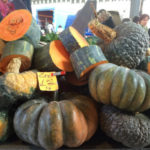 western.sare.org news putting-the-winter-back-in-winter-squash
western.sare.org news putting-the-winter-back-in-winter-squash Putting the Winter Back in Winter Squash
For growers, it doesn’t matter how much you harvest. What matters is what you sell! A good example of that came out of Oregon recently, but applies broadly. Growers were having trouble producing and storing a crop they for sale in the winter into the early spring. “We heard from farmers that they weren't making […]
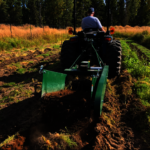 western.sare.org news building-agricultural-capacity-in-alaskas-kenai-peninsula-one-row-of-potatoes-at-a-time
western.sare.org news building-agricultural-capacity-in-alaskas-kenai-peninsula-one-row-of-potatoes-at-a-time Building Agricultural Capacity in Alaska’s Kenai Peninsula One Row of Potatoes at a Time
The Kenai Peninsula is the fastest-growing agricultural region in Alaska, with the number of farms increasing at nearly three times the rate of the rest of the state. But most of those farms are small – less than five acres – and selling direct to consumers at farmers markets or to local restaurants. The Kenai […]
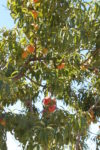 western.sare.org news funded-grants-on-diverse-ag-topics
western.sare.org news funded-grants-on-diverse-ag-topics Funded Grants on Diverse Ag Topics
Western SARE funding is important for many reasons. It helps researchers develop and test new sustainable farming and ranching techniques. It helps university extension agents and other agricultural professionals get that new knowledge into the hands of producers. And it helps farmers and ranchers conduct their own research on their own land, testing out new […]
 western.sare.org news hawaii-and-the-pacific-islands-face-unique-challenges-during-the-covid-19-crisis
western.sare.org news hawaii-and-the-pacific-islands-face-unique-challenges-during-the-covid-19-crisis Hawaii and the Pacific Islands Face Unique Challenges During the COVID-19 Crisis
The agriculture community in Hawaii and the Pacific Islands is feeling the same impacts from COVID-19 as the mainland. But in addition, the islands face the added challenges of remoteness and having tourism-dependent economies. The loss of tourism is a huge impact for all of the food system. Restaurants rely on tourists and the local […]
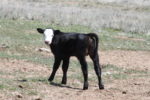 western.sare.org news getting-research-knowledge-to-ranchers-quickly
western.sare.org news getting-research-knowledge-to-ranchers-quickly Getting Research Knowledge to Ranchers Quickly
Western SARE’s Research to Grass Roots grants have a simple goal: to get the knowledge gained in recent research into the hands of farmers and ranchers who can use it to improve their practices and profitability. A newly funded Utah project is a perfect example. It looks at the results of four previously funded Western […]
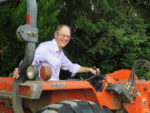 western.sare.org news western-ags-creative-strategies-during-covid-19-pandemic
western.sare.org news western-ags-creative-strategies-during-covid-19-pandemic Western Ag’s Creative Strategies During COVID-19 Pandemic
Farmers and ranchers in the West have confronted considerable challenges with the COVID-19 pandemic. They have been dealing with rapidly changing markets, supply chain slowdowns, and shortages. Strongly shifting consumer behaviors and dramatic drops in demand from restaurants and schools required them, as well as farmer organizations, to respond quickly and creatively. Responding quickly and […]
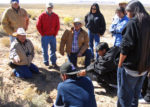 western.sare.org news focus-on-getting-research-results-adopted
western.sare.org news focus-on-getting-research-results-adopted Focus on Getting Research Results Adopted
Over the years, SARE has provided millions of dollars for research into sustainable agriculture practices through competitive awards to university researchers, non-profit organizations, extension agents, and directly to farmers and ranchers. The grant recipients conduct their research, develops education and outreach activities, and write up their results. SARE publicizes those results, through reports and newsletters […]
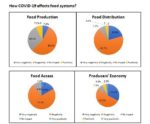 western.sare.org news response-to-covid-19
western.sare.org news response-to-covid-19 Response to COVID-19
Western SARE conducted a survey of state coordinators and grantees about the impact of, and responses to, COVID-19. We gained a lot of insight from our ag community. View responses and data and download full report.
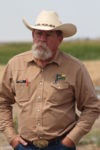 western.sare.org news regenerative-agriculture-the-next-evolution-of-sustainable-farming
western.sare.org news regenerative-agriculture-the-next-evolution-of-sustainable-farming Regenerative Agriculture – The Next Evolution of Sustainable Farming?
Looking through all the projects funded by Western SARE since 1988, you’ll find 173 with the word “sustainable” in the title, including 11 projects funded in 2019. That’s not surprising. What might be surprising is that same 31-year period, there have been only four projects with “regenerative” in their titles – and all four of […]
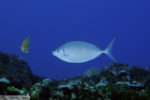 western.sare.org news turning-the-tide-on-overfishing
western.sare.org news turning-the-tide-on-overfishing Turning the Tide on Overfishing
According to Simon Ellis, director of MERIP Micronesia, over-fishing is depleting natural resources in Micronesia and other parts of the Pacific, creating a clear need to develop alternatives for the economy and food security for fishing communities. Sustainable, capture-based aquaculture and hatchery rearing methods of Rabbitfish hold promise not only for fisheries management and coral […]
En Espanol
Western SARE promueve la protección los recursos naturales y biológicos sobre los cuáles se basa la agricultura, la mejoría de la calidad de vida en comunidades rurales, y el incremento en las ganancias de las operaciones agrícolas, invirtiendo en proyectos innovativos de investigación y educación en agricultura sustentable. Western SARE apoya proyectos generados por productores, […]
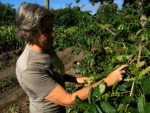 western.sare.org news ipm-for-coffee-berry-borer
western.sare.org news ipm-for-coffee-berry-borer IPM for Coffee Berry Borer
When the coffee berry borer arrived in Hawaii 2010, Suzanne Shriner had a hard conversation with her parents. “I sat down with them at the kitchen table and told them we might have to get out of the coffee business,” she remembered. “It was a pretty sober moment, and it wouldn’t have been a good […]
Growers Learn Pheromone-Based Monitoring
Growers are turning to Integrated Pest Management (IPM) tools in order to reduce the use of pesticides on their farm. Pheromone-based monitoring is one such technique used to manipulate the behavior of insect pests. It is a practice that could work well in the Northern Plains; however, according to Dr. Gadi V.P. Reddy of Montana […]
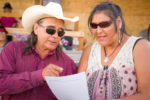 western.sare.org news building-internal-capacity-for-the-blackfeet-tribe-agricultural-resource-management-plan
western.sare.org news building-internal-capacity-for-the-blackfeet-tribe-agricultural-resource-management-plan Building Internal Capacity for the Blackfeet Tribe Agricultural Resource Management Plan
The Blackfeet Tribe, according to Loren BirdRattler, faces exciting and challenging times in terms of achieving food sovereignty through sustainable agriculture practices. An important undertaking in progress – the Blackfeet Agricultural Resource Management Plan (ARMP) – will change agricultural practices on the Blackfeet Reservation for many years to come, as well as the economic futures […]
 western.sare.org news pueo-are-much-more-than-pest-management
western.sare.org news pueo-are-much-more-than-pest-management Pueo are Much More than Pest-Management
If you can encourage a threatened native species, help control non-native pests, benefit the state’s farmers and preserve a culturally important icon, you’ve hit an ecological grand slam. That’s exactly what the University of Hawaii’s Melissa Price is trying to do with the islands’ pueo owls. The striking, dark birds are a species of short-eared, […]
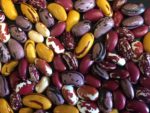 western.sare.org news students-breeds-beans-for-organic-farming
western.sare.org news students-breeds-beans-for-organic-farming Students Breeds Beans for Organic Farming
Graduate students at the University of California, Davis, have begun field tests on very rare commodities: high-yield, disease-resistant bean varieties that can thrive on organic farms. “Most crops—about 95 percent—have been bred for conventional farming and can be difficult to grow in organic systems,” said Travis Parker, a Ph.D. student in plant biology who is […]
 western.sare.org news reducing-medusahead-and-preparing-the-land-for-restoration
western.sare.org news reducing-medusahead-and-preparing-the-land-for-restoration Reducing Medusahead and Preparing the Land for Restoration
"Ranchers are hurting." That one thought is why Kip Panter, Research Animal Scientist at the USDA-ARS in Utah, is passionate about the collaborative work he, other Utah-based researchers, extension professionals, and ranchers have led to restore degraded grasslands. The inspired project team, studying at three ranches, found a “really good economical way to reduce medusahead […]